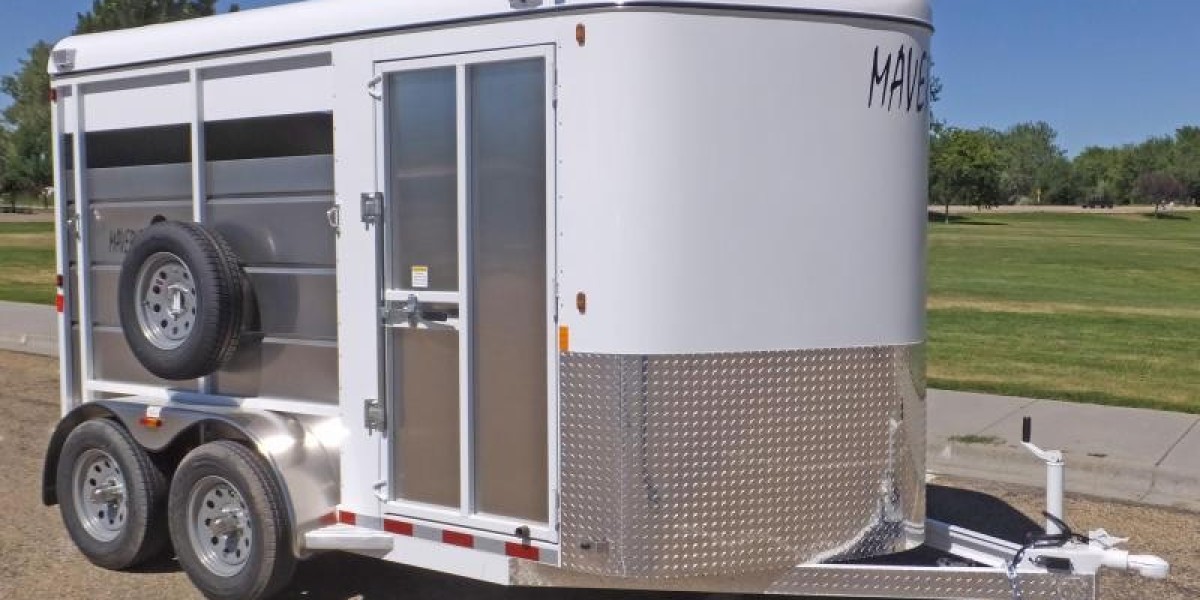Buying a 2 horse trailer for sale can be an excellent investment if you’re looking for an affordable way to transport your horses. However, purchasing a used trailer comes with its own set of risks. A used trailer can be a great deal, but only if you thoroughly inspect it before finalizing the purchase. An improperly maintained or damaged trailer can lead to costly repairs, safety issues, or even accidents.
In this step-by-step guide, we’ll walk you through the essential aspects to inspect when looking at 2 horse trailers for sale. This will help ensure that the trailer you choose is safe, reliable, and a great value for your investment.
Step 1: Inspect the Trailer’s Frame and Structure
The frame is the backbone of any trailer, and it’s crucial to ensure that it’s in good condition. A damaged frame can lead to serious safety concerns, especially when towing the trailer at high speeds.
What to Check:
Rust and Corrosion: Look for any signs of rust, especially on the undercarriage and steel components. While surface rust may be manageable, extensive rust or deep corrosion may indicate structural weaknesses that could compromise the trailer’s safety.
Cracks or Dents: Examine the frame for any cracks or dents, particularly around the welds and joints. Cracked or dented frames can affect the trailer’s stability and strength.
Bent or Misaligned Axles: Check the axles to ensure they are properly aligned and not bent. Misalignment can cause uneven wear on the tires and result in an unsafe towing experience.
Step 2: Evaluate the Trailer Floor
The trailer floor is where your horses will stand, so ensuring it is solid and secure is critical. A weak or damaged floor can lead to accidents or cause your horses to become uncomfortable during travel.
What to Check:
Flooring Material: Most 2 horse trailers for sale have wood or aluminum floors. Make sure that the wood is solid and not rotting. If the trailer has rubber matting, check for tears or excessive wear.
Soft Spots: Press down on the floor in various areas to feel for soft spots or areas that might be compromised. Soft spots can indicate rot or significant wear that might need costly repairs.
Drainage: Ensure the trailer has proper drainage systems to allow any liquid, such as water or manure, to drain out. Stagnant liquid can cause odors, corrosion, and potential safety issues for the horses.
Step 3: Inspect the Tires and Wheels
Tires are a critical safety component of any trailer, and they should be carefully examined to avoid breakdowns or accidents on the road.
What to Check:
Tire Tread: Ensure that the tires have adequate tread. Tires with worn-out tread can affect traction and increase the risk of accidents.
Age of Tires: Look for the tire’s manufacturing date, which is usually printed on the sidewall. Even if the tires appear to have good tread, tires older than 5 years may need to be replaced due to deterioration from age.
Even Wear: Check that the tires show even wear. Uneven wear could indicate alignment issues or problems with the suspension.
Condition of the Rims: Inspect the rims for cracks, dents, or rust. Damaged rims can lead to tire failure and are expensive to replace.
Step 4: Check the Brakes and Suspension
Brakes and suspension are crucial for safe towing and for ensuring the comfort of your horses during transit. You’ll need to confirm that both systems are in good working condition.
What to Check:
Brake Condition: If the trailer has electric or hydraulic brakes, test their functionality by applying the brake system while towing (if possible). If you cannot test it on-site, ensure that the brake components are intact, and check for any visible wear.
Suspension: Inspect the suspension for any signs of wear or damage. The suspension system absorbs shocks while towing and helps keep the trailer stable. Damaged suspension can result in a bumpy, uncomfortable ride for your horses and may cause excessive wear on the tires.
Step 5: Inspect the Hitch and Towing System
The hitch is responsible for securely attaching the trailer to your vehicle, so it must be in excellent condition for safety and ease of use.
What to Check:
Hitch Coupler: Check the hitch coupler for signs of wear or damage. Ensure that it can securely lock and that there are no cracks or defects.
Safety Chains and Wiring: Make sure the safety chains are in good condition and properly connected. The trailer’s wiring should be intact, with no frayed wires or exposed connections.
Trailer Tongue: Examine the trailer tongue for any signs of wear, bending, or cracks. A compromised trailer tongue could make towing dangerous.
Step 6: Examine the Horse Compartment
The interior of the trailer is just as important as the exterior, especially when it comes to ensuring your horses’ safety and comfort during transport.
What to Check:
Dividers: Check that the dividers are sturdy and secure, and ensure that they’re adjustable to accommodate different-sized horses. Make sure there are no sharp edges or rust that could injure your horses.
Ventilation: Adequate ventilation is essential for your horses’ comfort. Ensure that the trailer has windows or vents that allow for airflow. Check that these vents can be opened and closed securely.
Interior Flooring: Examine the floor of the horse compartment. Look for any damage to the flooring that could create a slip hazard or cause discomfort. The flooring should be sturdy and non-slip.
Step 7: Check the Lights and Electrical System
A well-functioning lighting system is critical for both your safety and the safety of others on the road, especially during nighttime travel.
What to Check:
Tail Lights and Turn Signals: Test all of the trailer’s exterior lights, including brake lights, turn signals, and running lights. Replace any burnt-out bulbs immediately.
Interior Lighting: Ensure that any interior lights are working properly, especially if the trailer has an enclosed space for your horses. Proper lighting inside the trailer can make loading and unloading much safer.
Step 8: Review the Maintenance History and Documentation
Lastly, ask the seller for the trailer’s maintenance history. A well-maintained trailer is much more likely to be a good investment, whereas a poorly cared-for one may come with hidden problems.
What to Look For:
Maintenance Records: Ensure that the trailer has been regularly serviced. This includes routine inspections, brake checks, and tire rotations.
Title and Registration: Verify that the trailer’s title is clear and that it is properly registered. Avoid trailers with missing or incomplete paperwork.
Conclusion
When considering 2 horse trailers for sale, performing a thorough inspection is crucial to ensuring that you’re making a wise purchase. By carefully checking the frame, flooring, tires, brakes, and other important components, you can avoid hidden issues and ensure that your horses are transported safely and comfortably.










